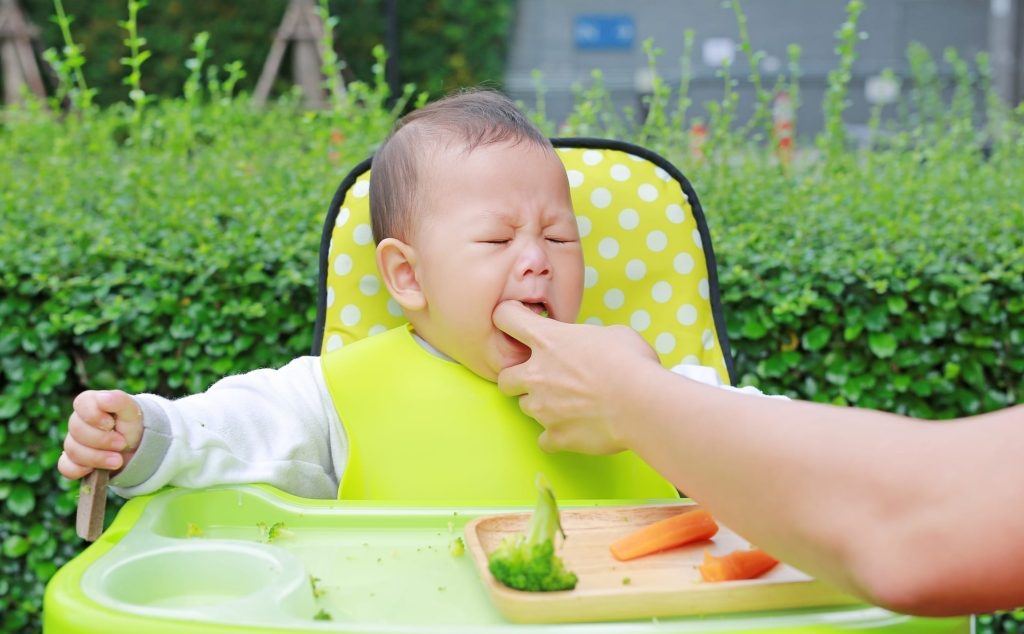Every five days, a child dies from food-related choking in the United States. This sobering statistic underscores why infant choking prevention must be a top priority for every parent and caregiver. Understanding the risks and implementing proven safety measures can save your child’s life.
Understanding Infant Choking Prevention Risks
Children under five years of age account for 73% of nonfatal choking injuries and 75% of choking fatalities. The numbers are alarming. Approximately 12,000 children are taken to hospital emergency rooms each year with injuries from choking.
Why are infants and toddlers so vulnerable? Young children lack a full set of teeth, which limits their ability to chew food properly before swallowing. Their natural curiosity leads them to explore objects with their mouths. Additionally, their small airways make it easier for objects to become lodged and block breathing.
Recognizing High-Risk Foods for Infant Choking Prevention
Hot dogs are the leading cause of food-related choking in children 3 and under. Food manufacturers design these products without considering choking risks for young children. Parents need to know which foods pose the greatest danger.
The following foods present significant choking hazards for children under age four:
Round, firm foods: Whole grapes, cherry tomatoes, hot dogs, and hard candies can completely block a child’s airway. These items match the diameter of a young child’s trachea perfectly.
Hard foods: Raw carrots, nuts, seeds, and popcorn require thorough chewing that young children cannot perform effectively.
Sticky foods: Peanut butter chunks, caramels, and gummy candies can adhere to the throat and cause obstruction.
Choking is the fourth leading cause of unintentional death and the leading cause of infant death. These statistics demonstrate why careful food selection remains crucial for infant choking prevention.
Practical Infant Choking Prevention Strategies
Implementing these evidence-based strategies will significantly reduce your child’s choking risk:
Modify food preparation: Cut grapes and cherry tomatoes into quarters. Slice hot dogs lengthwise, then cut into small pieces. Cook vegetables until soft enough to mash with a fork. Spread peanut butter thinly rather than serving in chunks.
Create a safe eating environment: Ensure your child sits upright in a high chair during meals. Never allow running, walking, or lying down while eating. Supervise all mealtimes without exception.
Control portion sizes: Place only a few pieces of food on your child’s plate at a time. This approach prevents overstuffing and encourages proper chewing.
Teach proper eating habits: Encourage your child to chew food thoroughly before swallowing. Avoid rushing through meals. Discourage talking with a full mouth.
Updated Guidelines for Infant Choking Prevention Response
The 2025 American Heart Association guidelines recommend alternating five back blows followed by five abdominal thrusts for conscious children and adults until the foreign object is expelled or the person becomes unresponsive. For infants under one year, caregivers should alternate between five back blows and five chest thrusts using the heel of one hand.
The techniques differ based on age. Parents must never perform the Heimlich maneuver on infants under 12 months. The risk of internal injury outweighs the benefits. Instead, position the infant face down on your forearm and deliver five firm back blows between the shoulder blades.
Beyond Food: Non-Food Infant Choking Prevention
Latex balloons account for 29% of deaths by foreign body aspiration between 1972 and 1992. Parents often overlook non-food choking hazards. Small toys, coins, buttons, and batteries pose serious risks.
Use the toilet paper roll test: any object that fits inside an empty toilet paper tube is too small for children under three years. Keep these items completely out of reach.
Monitor older siblings closely. Many choking incidents occur when an older child gives dangerous toys or food to a younger sibling without understanding the risk.
Creating a Comprehensive Infant Choking Prevention Plan
Develop a multi-layered approach to protect your child:
Education: Learn to recognize choking signs immediately. A choking child may be unable to cry, cough, or breathe. The universal choking sign involves clutching the throat with both hands.
Preparation: Remove choking hazards from your home systematically. Check under furniture and between cushions regularly. Store small objects in containers that young children cannot access.
Training: Enroll in certified CPR and first aid courses. Knowing how to respond during a choking emergency provides invaluable peace of mind and life-saving skills.
Parental awareness and education represent the most important preventive strategy. Studies consistently demonstrate that educated parents prevent more choking incidents than those who remain unaware of proper safety measures.
When to Seek Medical Attention
Some children experience frequent gagging or choking episodes during meals. This pattern may indicate an underlying medical condition affecting swallowing ability. Consult your pediatrician if your child regularly struggles with food.
Never dismiss repeated choking incidents as normal developmental behavior. Early intervention can identify and address serious health concerns before they escalate into life-threatening emergencies.
Infant Choking Prevention Saves Lives
Morbidity and mortality from choking events are theoretically preventable with proper policies, provider education, and parent counseling. Every parent holds the power to protect their child through vigilant supervision, appropriate food preparation, and emergency response training.
Choking represents one of the most preventable causes of childhood injury and death. Your commitment to infant choking prevention can make the difference between tragedy and safety.
Take Action Today: Get Certified in CPR and First Aid
Do not wait until an emergency occurs to learn life-saving techniques. CPR Classes Tampa, an American Heart Association training site, offers comprehensive BLS classes in Tampa that equip parents with the essential skills they need. Their stress-free, hands-on courses cover infant CPR, choking response, and first aid techniques specifically designed for young children.
Whether you need initial certification or renewal in BLS for Healthcare Providers, ACLS, PALS, or CPR and First Aid courses, their expert instructors provide the training you need. Secure your spot in CPR certification in Tampa classes today and gain the confidence to respond effectively during any choking emergency.
Your child’s safety depends on your preparedness. Enroll now and become the first line of defense in infant choking prevention. Visit CPR Classes Tampa to register for upcoming sessions and protect the children in your care.





